Email‑Ready Proof of Income: Quick Templates You Can Use
Last updated: August 2025
By FinancialDocsProvider.com Editorial Team • Published: August 2025
When a landlord, lender, or agency asks for proof of income, a clean email and well‑organized attachments often decide whether you’re approved quickly or sent to “manual review.” This guide gives you a proof of income email template pack you can paste, plus compliant formatting tips that speed things up—without ever changing the facts.
At FinancialDocsProvider.com, we specialize in document clean‑up and packaging—clarity, legibility, and organization—so your legitimate income records are easy to read and verify. We’re a compliance‑first team: we edit layout, not reality. We never fabricate numbers, dates, parties, or documents, and we won’t help anyone try.
Related Entities & Terms
- W‑2 (US), 1099‑NEC/1099‑K (US), T4 & NOA (Canada), P60/P45, SA302 (UK)
- Pay stubs / payslips, bank statements, employer verification letters
- Tax returns: Form 1040 & Schedule C (US), T1 (CA), Self Assessment (UK)
- Regulators: IRS, CFPB, FTC (US); HMRC & GOV.UK; CRA & FCAC (Canada)
- Underwriting, ability‑to‑repay, anti‑fraud controls
- Redaction, OCR, PDF/A export, metadata hygiene
- Lease applications, auto finance, SBA/small‑business funding
- Employment verification, consent to disclose
- Income variance, seasonal earnings, P&L statements
- Third‑party verification services (The Work Number, payroll portals)
- KYC/AML screening, source‑of‑funds declarations
- Electronic bank feeds vs. static PDF statements
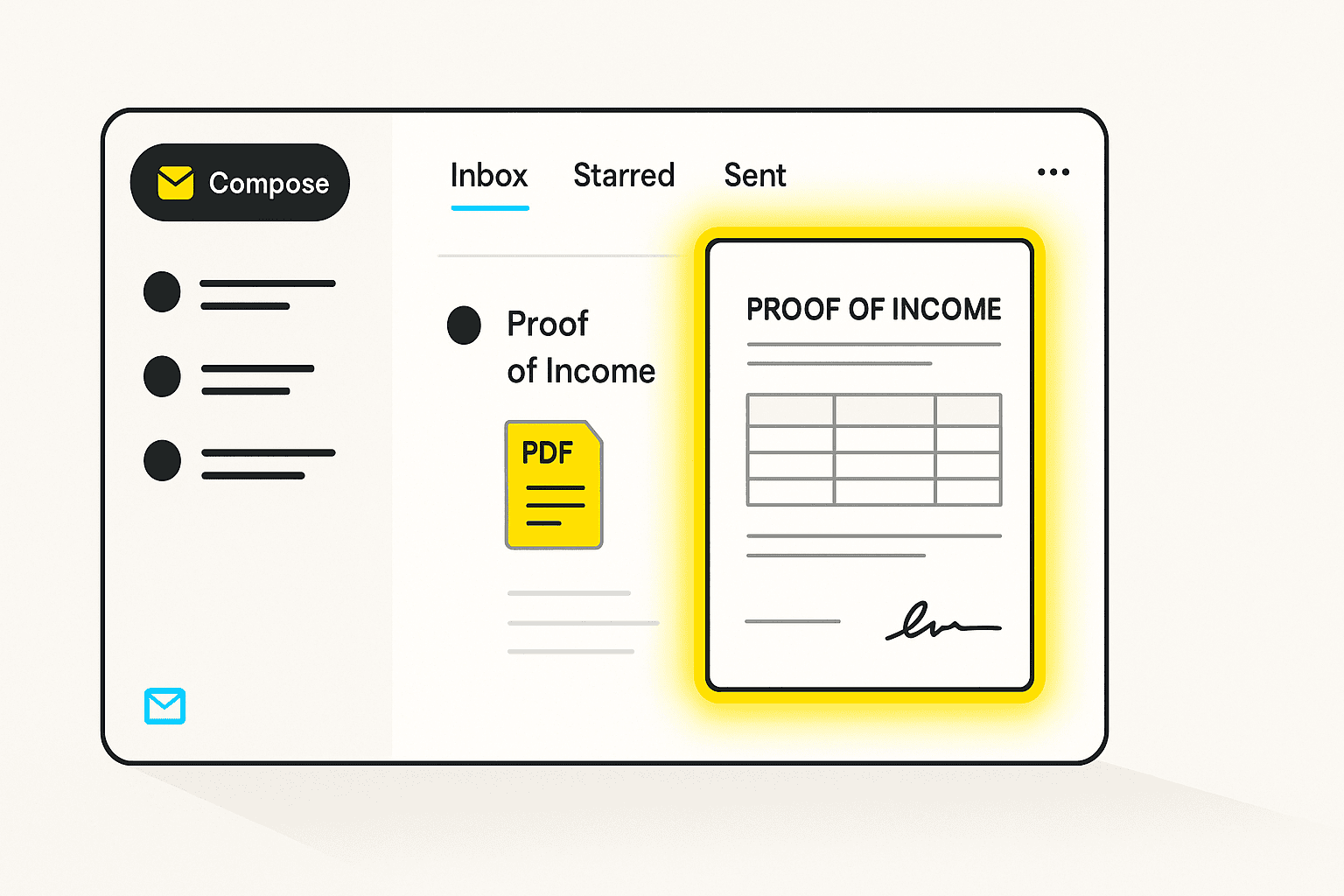
Formatting vs. Falsification: The Law in the US, UK, and Canada
Every market takes proof‑of‑income fraud seriously. You are free to improve how your documents look—think readability and redaction—but not what they say. Altering amounts, dates, employers, or tax details can be considered fraud. Below is a practical overview—not legal advice—so you know where the lines are.
United States: Formatting is Fine; Changing Facts is Fraud
US lenders and landlords rely on federal and state laws against deception. Agencies like the IRS, CFPB, and FTC publish consumer guidance and pursue enforcement for misrepresentation. You may re‑export a fuzzy pay stub for clarity, redact account numbers, or combine files—so long as the numbers and parties remain unchanged.
- Allowed: redaction of sensitive info; OCR for searchability; adding page numbers; flattening scans; bundling related exhibits.
- Not allowed: editing wages, hours, deposit amounts, tax lines, or employment dates; fabricating statements or employers.
United Kingdom: HMRC Records and Clear Provenance
UK underwriters commonly ask for payslips, P60/P45, and Self Assessment evidence (such as SA302 and a Tax Year Overview). Clarifying file quality or adding labels is acceptable; changing figures or HMRC‑issued data is not. Some checks may use payroll/HR systems or employer references, so consistency matters.
Canada: CRA, NOA, and Bank‑Level Scrutiny
Canada’s lenders often request T4s, recent pay stubs, bank statements, and a CRA Notice of Assessment (NOA). You can redact non‑essential data and fix legibility; you cannot adjust totals, remitter info, or dates. Lenders may confirm data directly with employers or CRA portals.
Bottom line: clean formatting helps readers; changing facts violates law or policy. Our services focus on clarity and organization only.
What Edits Are Allowed (and Useful) for Faster Reviews
Think of formatting as how you package already‑true information. Done right, it speeds up underwriting and reduces back‑and‑forth.
Readability & Accessibility
- OCR & searchability: Convert scans into searchable PDFs so analysts can find names, totals, and dates quickly.
- Contrast fixes: Improve faint scans; remove shadows; straighten crooked pages.
- Page hygiene: Add page numbers and labels (e.g., “Pay Stub 1 of 3 – May 2025”).
- Redaction: Hide sensitive but non‑mandatory details (partial account numbers, SSN/NI/SIN). Keep what’s required visible.
Export Fixes & PDF Reliability
- Re‑export to stable PDF: Flatten layers to prevent “content missing” errors in lender systems.
- Combine related exhibits: Merge pay stubs or statements into a single, bookmarked file with a cover page.
- File naming: Use consistent, descriptive names:
2025‑05_Paystub_J.Smith_2of3.pdf.
Document Organization & Cross‑Referencing
- Create a cover sheet listing each attachment with a one‑line description (source, date range, contact).
- Link totals across documents with a short note: “June net pay in bank statement p.3 matches Pay Stub #2.”
- Include contact authorization if your employer requires it for verification.
What’s Illegal (and the Risks)
Altering factual content—income, dates, employer names, bank inflows, tax balances—is not “formatting.” It can constitute fraud, forgery, or identity deception. Lenders and property managers use internal controls and third‑party services to catch it.
Examples of Falsification
- Editing net pay to meet a rent multiplier.
- Photoshopping deposits to simulate payroll.
- Changing employer start dates or job titles to fit policy.
- Modifying HMRC/CRA/IRS outputs (e.g., SA302, NOA, 1040 lines).
Consequences You Want to Avoid
- Application denial and freeze with related landlords or lenders.
- Account closures or blacklisting with payroll portals.
- Legal exposure: civil damages, criminal charges, or immigration issues depending on jurisdiction.
- Long‑term credit impact if fraudulent activity is reported.
Underwriters check math, compare totals across documents, and often verify straight with employers or tax authorities. That’s why clean, honest packaging is your advantage.
Proof of Income Email Template Library & Real‑World Use Cases
Below are paste‑ready email examples for common scenarios. Customize placeholders and attach unaltered, legitimate documents. When in doubt, include a short cover sheet explaining what each file shows and who can verify it.
Template: Tenant → Landlord (Initial Submission)
Subject: Proof of Income for {Property Address} — {Your Full Name}
Body:
Hi {Leasing Manager Name},
As requested, I’m submitting my proof of income for {Property Address}. I’ve attached {#} recent pay stubs and my {most recent tax return / employment letter}. The files are labeled by date, and a brief cover sheet is included on page 1.
Please let me know if you’d prefer employer verification by phone or email. I’ve provided HR contact details and consent on the cover sheet.
Thank you,
{Your Name}
{Phone} · {Email}
Attachments: 1) Cover Sheet; 2) Pay Stubs {mm/yyyy–mm/yyyy}; 3) Bank Statement {month/year}; 4) {W‑2 / P60 / T4} (if required)
Template: W‑2 Employee → Lender (Mortgage/Auto)
Subject: Income Documentation — {Loan/App #} — {Your Name}
Body:
Hello {Loan Officer Name},
Attached are my {2–3} latest pay stubs, {W‑2 / P60}, and {bank statement pages} showing payroll deposits. I included a one‑page summary that cross‑references totals (e.g., June net pay on Pay Stub #2 matches deposits on Bank Statement p.3).
If you need employer verification, HR for {Employer Name} can be reached at {HR Email/Phone}. I’ve added consent on the cover sheet.
Best regards,
{Your Name}
Template: Employer/HR → Landlord or Lender (Verification Reply)
Subject: Employment & Income Verification — {Employee Name}
Body:
Dear {Recipient Name},
Per your request and with {Employee Name}’s consent, we confirm employment at {Company}. Position: {Title}. Start date: {MM/DD/YYYY}. Current status: {Full‑time/Part‑time}. Base pay: {annual/monthly/weekly/hourly} as of {Date}. Variable compensation may apply per company policy.
For official documents, please see attached {employment letter / recent pay statements}. Contact us at {HR Email/Phone} with any follow‑up questions.
Sincerely,
{HR Rep Name}
{Title}, {Company}
Template: Self‑Employed → Landlord/Lender (US Focus)
Subject: Self‑Employment Income — {Your Name} — {Application #}
Body:
Hi {Recipient Name},
I’ve attached my most recent Form 1040 with Schedule C, year‑to‑date P&L, and the last three months of business bank statements. Page 1 is a summary showing monthly averages and where totals match deposits.
I authorize verification with my tax preparer ({Name, Phone/Email}). Please let me know if you also need 1099s or additional months of statements.
Thank you,
{Your Name}
Template: Self‑Employed → Lettings/Lender (UK Focus)
Subject: Self‑Employment Proof of Income — {Your Name} — {Property/Case #}
Body:
Hello {Recipient Name},
Attached are my SA302 tax calculation and Tax Year Overview for {tax years}, plus {3–6} months of bank statements. The cover sheet maps SA302 figures to bank inflows where relevant.
If you need further detail, I can provide accountant confirmation at {Accountant Contact}. Many thanks.
Template: Self‑Employed → Landlord/Lender (Canada Focus)
Subject: Income Verification — {Your Name} — {Application #}
Body:
Hi {Recipient Name},
I’ve attached my CRA Notice(s) of Assessment (NOA) for {years}, T1 return summary, and {3–6} months of business bank statements. The first page summarizes monthly income and notes where deposits align with invoices.
Should you need verification from my accountant or CRA references, details are on the cover sheet.
Template: Auto Loan Applicant → Dealership Finance
Subject: Income Documents Attached — {Vehicle} — {Your Name}
Body:
Hello {Finance Manager Name},
As discussed, I’ve attached my latest {2–3} pay stubs, {W‑2 / T4 / P60}, and bank statement pages showing payroll deposits. I’ve also included my driver’s license and proof of address, per your checklist.
Let me know if you need employer contact details or additional months of statements.
Thanks,
{Your Name}
Template: SBA/Small‑Business Funding (US)
Subject: Income & Cash Flow Packet — {Business Name} — {Case #}
Body:
Dear {Advisor Name},
Attached are {Business Name}’s last two years of returns, YTD P&L and balance sheet, and the last six months of bank statements. A cover sheet highlights recurring revenue and reconciles deposits to invoices.
Please advise if you also need AR aging or a CPA letter. Thanks for your guidance.
Attachment & Subject Line Tips
- Subject lines: “Income Docs — {Name} — {Address/Case #}” keeps queues tidy.
- Attachment order: Cover sheet → latest income proof → supporting statements → ID/address (if requested).
- File names: Use dates and types:
2025‑06_Payslip_A.Brown.pdf;2024_T4_J.Singh.pdf;SA302_2023_R.Khan.pdf.
How We Work: Intake → Reconciliation → Formatting → Delivery
Our role is to make your true information easier to understand. We coordinate the packaging, cross‑references, and readability—never the story your documents tell.
1) Intake
- You securely provide your files (e.g., pay stubs, payslips, bank statements, W‑2/T4/P60, tax returns, NOAs).
- We confirm the request context (landlord, lender, auto finance, SBA, etc.) and what each reviewer expects.
2) Reconciliation
- We map where totals, dates, and parties agree across documents (e.g., stub totals to bank deposits).
- We flag missing pieces or readability issues for you to fix at the source (e.g., request a clearer employer letter).
3) Formatting & Packaging
- OCR, straighten, contrast correction, page numbering, bookmarks.
- Clean redaction of non‑required PII.
- Bundle into a single PDF packet or clearly named set of files.
4) Delivery
- We provide an email‑ready packet with a short cover page you can send immediately.
- Need help wording your message? Use any template above or ask us for proof of income editing examples tailored to your case.
Timelines & Boundaries
- Typical timelines: straightforward packets are usually completed quickly; complex multi‑year tax packets may take longer.
- Hard boundary: we do not fabricate or alter factual information—amounts, dates, parties, or tax data.
- Pricing: see our current pricing and about our process. You can also contact our team for a quick assessment.
Quick Compliance Checklist & Packaging Tips
Pre‑Send Checklist
- Match the request: If the checklist asks for 2–3 recent pay stubs, send exactly that, plus any W‑2/P60/T4 as specified.
- Confirm dates: Ensure pay periods and bank deposit dates align for the months requested.
- Legibility: If a scan is faint or crooked, re‑scan or ask us to repair readability (no data changes).
- Redact smartly: Hide non‑required digits of SSN/NI/SIN. Never redact required fields.
- Cross‑reference: On a one‑page cover sheet, list where totals appear (e.g., “Pay Stub #3 → Bank Statement p.4, 06/28 deposit”).
- Employer contact: Add HR contact details and a consent line for verification.
- Tax docs: Use official outputs: 1040 + W‑2 (US), SA302 + Tax Year Overview/P60 (UK), T1 + T4 + NOA (Canada).
- File integrity: Use stable PDF; avoid editable forms unless the recipient requires them.
Packaging Tips (Email‑Ready)
- One packet if possible: A single PDF with bookmarks saves reviewers time.
- Descriptive names: Dates first, then type and your surname.
- Bank proof: Include statement pages showing payroll deposits adjacent to the pay stub period.
- For self‑employed: Add a short P&L and three months of business bank statements to support inflows.
- For rental applications: Include lease address/reference number in the email subject line.
- Security: If sending sensitive files, use encrypted email or secure portals when offered.
- Need help? Ask about bank statement formatting for clarity and verification.
Red Flags That Trigger Rejections or Secondary Review
- Mismatched math: pay stub totals don’t reconcile to bank deposits.
- Inconsistent employer info: different addresses, EINs, or phone numbers across documents.
- Weird metadata: PDFs show unusual creators or layered text inconsistent with official outputs.
- Fonts & alignment: patched‑in numbers or kerning that doesn’t match.
- Gaps: missing months or partial statements when full cycles were requested.
- Round numbers only: suspiciously tidy amounts in deposits or pay lines.
- Out‑of‑date docs: tax years that don’t match current filing status, stale pay periods.
- Over‑redaction: key fields blacked out (e.g., employer name, period dates, gross/net breakdowns).
Official Resources & Helpful Links
Use official sources whenever possible. These pages explain what reviewers expect and how to obtain recognized documents:
- United States — IRS: Get Transcript (official tax transcripts)
- United Kingdom — GOV.UK: Self Assessment: tax return guidance & evidence
- Canada — CRA: Proof of income statement (NOA and more)
Need help packaging what you already have? Explore our internal resources:
- Service menu: proof of income editing and bank statement formatting
- Our pricing
- Questions? contact our team or read about our process
Frequently Asked Questions
1) Is it legal to edit proof of income documents?
Yes—formatting is legal; falsifying is not. You may improve readability (OCR, straighten scans, add page numbers) and redact non‑required PII. You may not change amounts, dates, employer names, or tax data.
2) Which documents count as proof of income?
Commonly accepted: recent pay stubs/payslips, W‑2/P60/T4, bank statements showing deposits, employer verification letters, and tax returns (1040 + Schedules in the US; SA302/Tax Year Overview in the UK; T1/NOA in Canada).
3) I’m self‑employed—what should I send?
Provide your latest tax return and NOA/SA302 equivalent, a recent P&L, and 3–6 months of business bank statements. Add a cover sheet explaining seasonality if applicable.
4) Can you change numbers to match a lender’s policy?
No. We never alter factual content. We improve clarity and organization only. Attempting to change the numbers can result in denial and legal consequences.
5) How should I name and order files for email?
Use date‑first, descriptive names (e.g., 2025‑06_Paystub_J.Smith.pdf) and send a single bookmarked PDF when possible. Put a one‑page cover sheet first.
Need accurate, reliable financial documents fast? Contact FinancialDocsProvider.com now.

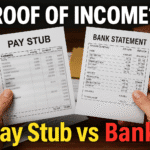
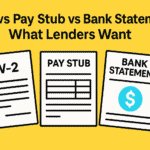
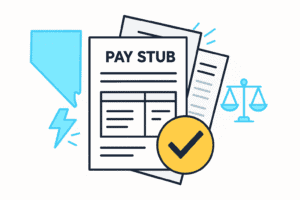
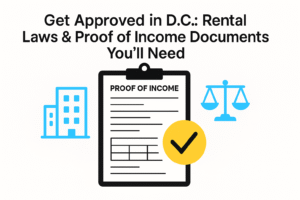
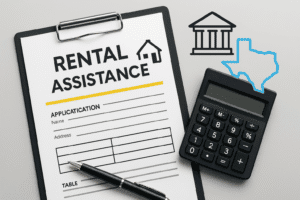
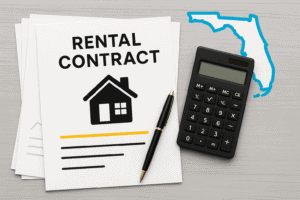

Add comment